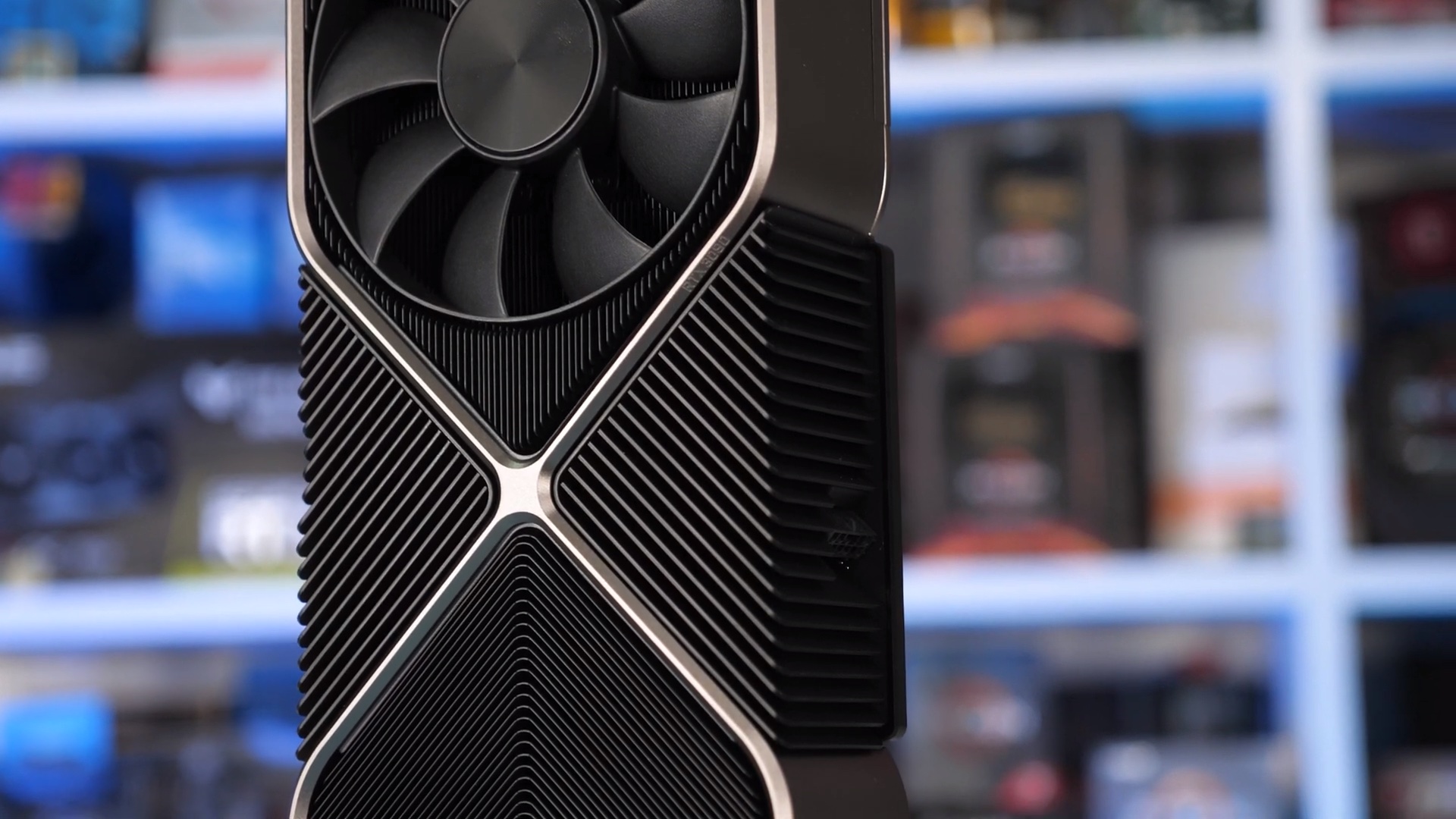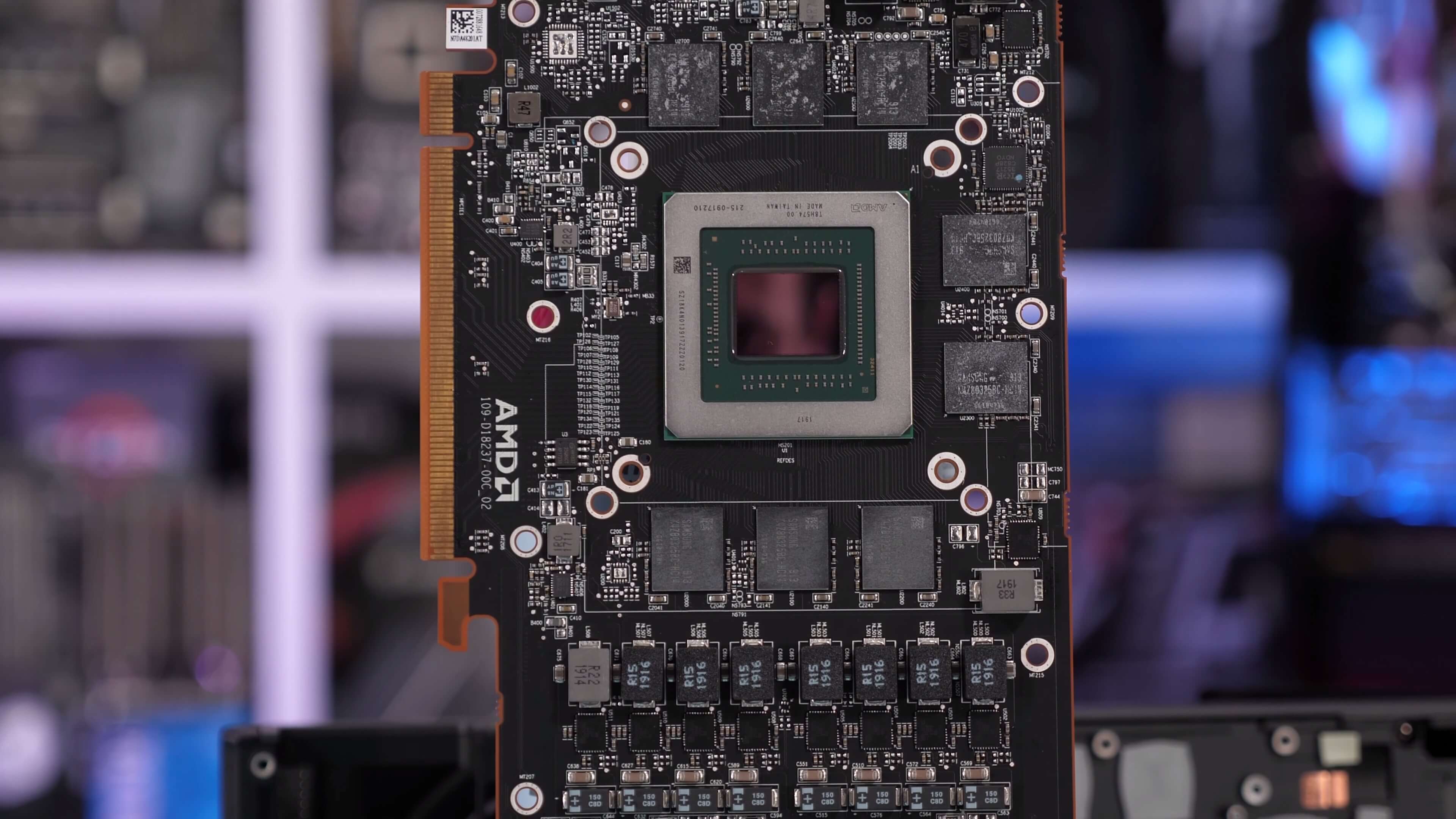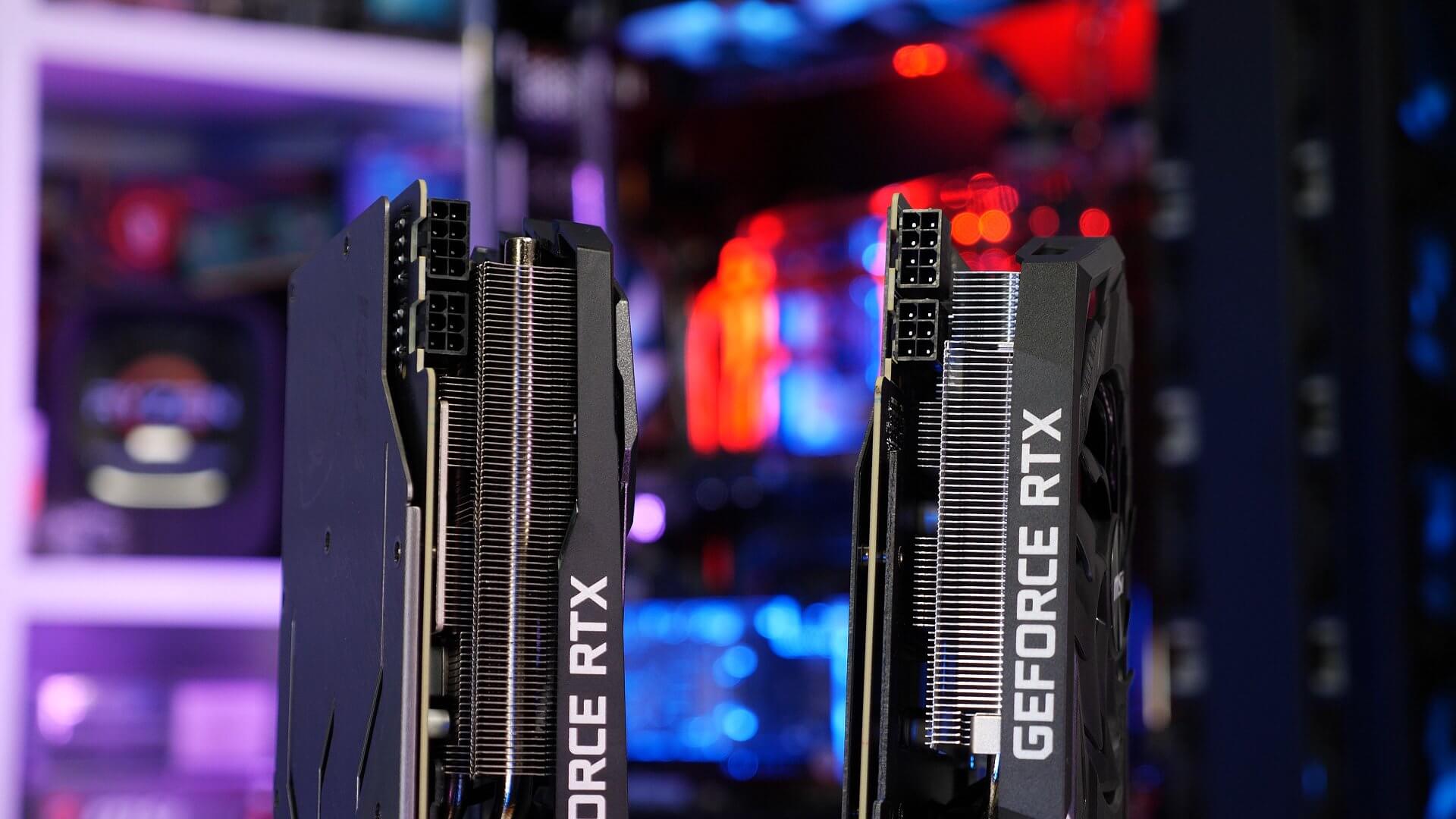Follow up: The Best GPUs 2022

Editor's note: The graphics card market has been hit by several challenges, but supply chain and overflowing demand from gamers was only the beginning. In 2021, why is demand for graphics cards so high, and why are people willing to pay insane prices? The short answer is, of course, cryptocurrency mining. We'll update this guide when you can finally buy these graphics cards and pricing is set by a fair market and not scalpers. In the meantime, here are some of our latest reviews, information and comparisons for the best graphics cards (you probably can't buy right now):
Here's a quick Ampere vs. RDNA2 recap of how we've called it so far...
In a no-sense battle for gamers, between the GeForce RTX 3090 and Radeon RX 6900 XT, the RTX 3090 is the clear winner as it's a no-compromise solution offering more VRAM and better performance at 4K. If you have money for the best and want the best, the 3090 is at least that, the 6900 XT is a compromise and at $1000 makes less sense than the 3090 at $1500.

In the battle between the RTX 3080 and RX 6800 XT: we went with the Nvidia GPU when making our 30 game benchmark analysis. The GeForce GPU offers a similar level of performance at 1440p with marginally better 4K results, but the deal breaker for AMD is the lack of DLSS-like technology, weaker encoding support, and immature ray tracing.
Picking between the RTX 3070 and RX 6800 is more difficult. The RX 6800 benefits from a significant increase in VRAM, doubling what the 3070 offers to 16 GB, that's nice and should see the Radeon GPU age far better. But the lack of DLSS (with FSR coming but still an unknown), Nvidia's better encoder and ray tracing support, it's a close call, assuming both were readily available around the MSRP.

Then we have the Radeon 6700 XT vs. GeForce RTX 3070 battle, and for that one we went with Nvidia. The 6700 XT just isn't priced competitively enough (at MSRP).
Other reviews you may want to check:
Ray Tracing & DLSS with the GeForce RTX 3080: RTX ON vs. OFF
Nvidia GeForce RTX 3060 Ti Review
AMD Radeon RX 6700 XT vs. 5700 XT
Nvidia GeForce RTX 3080 Review
AMD Radeon RX 6800 XT Review: 6800 XT vs. RTX 3080: Fight!
When it comes to graphics cards, we go in-depth. Every year we test dozens of GPUs from both AMD and Nvidia to see which ones are worth your money, and which are dead on arrival. To ensure our information is always relevant, we continue to evaluate them as new games, drivers, and card-specific features are launched.
To make the process of buying a new GPU a little easier, we're bringing you TechSpot's Best Graphics Cards buying guide. This piece is intended to answer one simple question: Given a specific budget, which is the graphics card you should buy? Fret no more.
- Entry-Level GPU ($100-$200) GeForce GTX 1650 Super
- Mainstream GPU ($200-$300) GeForce GTX 1660 Super
- High-End 1440p GPU (Over $400) Radeon 5700 XT or GeForce RTX 2070 Super
- High-End 4K GPU (Over $600) GeForce RTX 2080 Ti
Best Mainstream GPU ($100 - $200)
Radeon RX 580 vs. RX 570 vs. RX 5500 XT vs. GeForce GTX 1650 Super
If you're after power efficiency, the best value-oriented GPU is the GeForce GTX 1650 Super which comes at around $160. If you care less about efficiency and want the most bang for your buck, then you should also consider the good old Radeon RX 580 which has a more ample 8GB memory buffer. Generally speaking, you can snag either for as little as $160 depending on your brand of choice, which is a great deal. You may also want to fish for RX 590 cards that are about $200 and offer a little boost over these two otherwise great options.
Other options in this price range include the Radeon RX 5500 XT for $200 if you want an 8GB VRAM buffer, or $180 for a measly 4GB. The 5500 XT is a gimped GPU in our opinion because of its PCIe 4.0 x8 bandwidth limitation. Not only does that make the PCIe 4.0 support completely worthless, but it means the card is potentially handycapped when installed in a system that only featured PCIe 3.0 support, which right now is the vast majority.
Lastly, there's the more affordable Radeon RX 570. The 8GB version of the RX 570 isn't great in terms of value, but if you want a cheap and still very capable graphics card, the 4GB RX 570 are a steal at just $120. For a little extra cash, this little GPU is much faster for gaming than the sub-$100 alternatives you can find around and that we decided to skip entirely for this buying guide.
Best Mid-Range GPU ($200 - $350)
GeForce GTX 1660 Super vs. GeForce RTX 2060 vs. Radeon RX 5600 XT
Gamers looking to spend around $300 have a few options to consider, but overall we like the GeForce GTX 1660 Super a lot if you want to spend less in this range. For about $230, the GeForce GTX 1660 Super offers amazing value, beats the competition at this price point and is an efficient little card.
The GTX 1660 Super is on average a tad faster than the Radeon RX 590, beating it overall by a 13% margin, even though the Radeon has more VRAM. Compared to power hungry Vega 56, the GTX 1660 Super is ~15% slower but it also costs less. Crucially, it's widely available, it's worlds better in terms of power usage, and offers a little extra OC headroom.
Closer to the $300 mark and slightly above it, the Radeon RX 5600 XT is a respectable product that has pushed for lower prices and better performance at $300. For that alone, we commend it. The GPU won't blow your socks off and yet it's better value than the Radeon RX 5700 which we liked a lot on that aspect already.
On the opposing side, the GeForce RTX 2060 has a few models selling for around $320 and above. Between those two, the 5600 XT is a little cheaper, offers about the same performance and is a little more efficient. Recently we discouraged you from picking Navi-based Radeons due to AMD's spotty driver support, but it seems the company has been working hard and those nags are mostly over.
For a pure value play, we can recommend the Radeon RX 5600 XT that starts at $279. Make sure it corresponds to the games you play the most in our 32 game benchmark where AMD or Nvidia are favored by certain titles. Then for slightly more money, we still like the GeForce RTX 2060 better as an overall package and some potential for ray tracing and DLSS support which has meant little so far, but there's potential for more in the coming year.
Best High-End 1440p GPU ($400 and above)
Radeon 5700 XT vs. Radeon 5700 vs. RTX 2070 Super vs. RTX 2060

Potential driver issues aside, the mid-range market is locked down by AMD with the Radeon RX 5700 and 5700 XT in terms of bang for your buck. After a series of massive game benchmarks featuring the 5700, 5700 XT, RTX 2060 Super and RTX 2070 Super, we have a good idea of how these GPUs compare. In a nutshell, the Radeon 5700 XT is $100 cheaper than the RTX 2070 Super and when compared across a massive range of games it's only 6% slower on average at 1440p.
Why would you go GeForce instead? The RTX 2070 Super is faster for 4K gaming and we've also witnessed a promising renaissance of DLSS. Not unlike the previous price segment, the Radeon is the better value proposition, even at 4K the 5700 XT offers more value: it's 9% slower but costs 20% less.
The Radeon 5700 XT also eliminates the RTX 2060 Super from contention, offering more performance at the same price, while the vanilla 5700 offers 2060 Super performance for a ~$50 discount.
An additional word about the RTX 2070: careful about selecting your brand and model. Non-Super RTX 2070s are still around, but the RTX 2070 Super variant is the obvious choice. It's faster than the standard 2070 by ~12 percent for the same price.
An additional word about Radeon 5700 cards: XT models with custom cooling will set you back an extra $10 to $40 and provide lower temperatures and overall quieter operation.
Best High-End 4K Gaming GPU (Over $600)
GeForce RTX 2080 Ti vs. GeForce RTX 2080 Super vs. Your Wallet
Nvidia has a stranglehold over the high-end GPU market. If you're looking to spend more than $700 for something 4K-ready, your options are all going to come from the Green Team. Pick your poison between the RTX 2080 Super and the GeForce RTX 2080 Ti. But be aware, you're beyond the point of diminishing returns here.
On average the GeForce RTX 2080 Super is only ~15% faster than the 5700 XT at 1440p, yet it's priced 75% higher. At 4K resolution the 2080 Super does better, offering 26% more frames than the $400+ Radeon RX 5700 XT.
If price is no object and you simply want the best consumer-oriented GPU on the market, the GeForce RTX 2080 Ti remains the clear winner.
The GeForce RTX 2080 Ti offers around 20% more performance than the RTX 2080 Super. It's also 47% faster than the RX 5700 XT at 4K, but of course, that comes at a hefty premium. A year and a half after launch, 2080 Ti cards are still priced above the MSRP thanks to the lack of competition. If you are after a fancy model like the Gigabyte Aorus Xtreme, MSI Gaming X Trio or Asus ROG Strix, to cite some examples, expect to pay somewhere in the ballpark of $1,200.
The RTX 2080 Ti does enable higher quality 4K gaming experience than the rest of the pack sitting below it, so if price is no object and you simply want the best consumer-oriented GPU on the market, the GeForce RTX 2080 Ti remains the clear winner.
Further Reading
- Navi vs. Turing: An Architecture Comparison
- Display Tech Compared: TN vs. VA vs. IPS
- The Best Gaming Monitors



